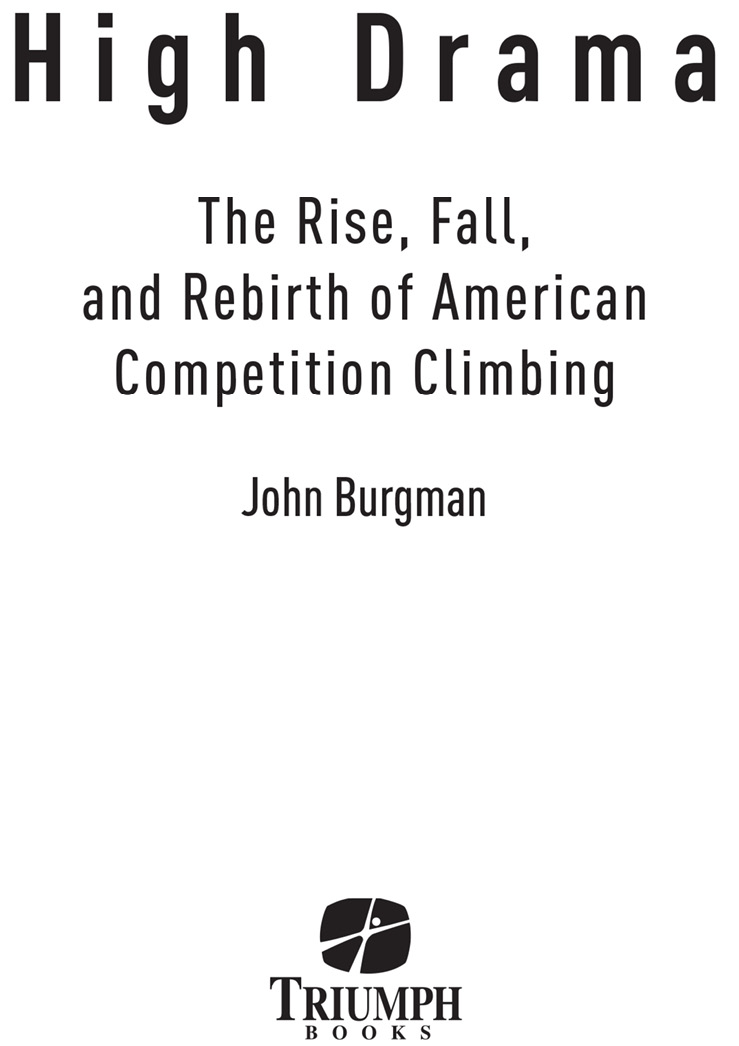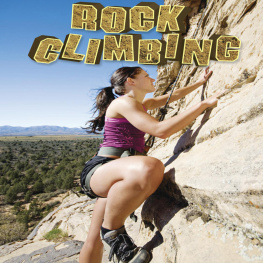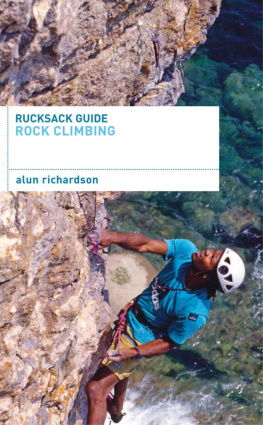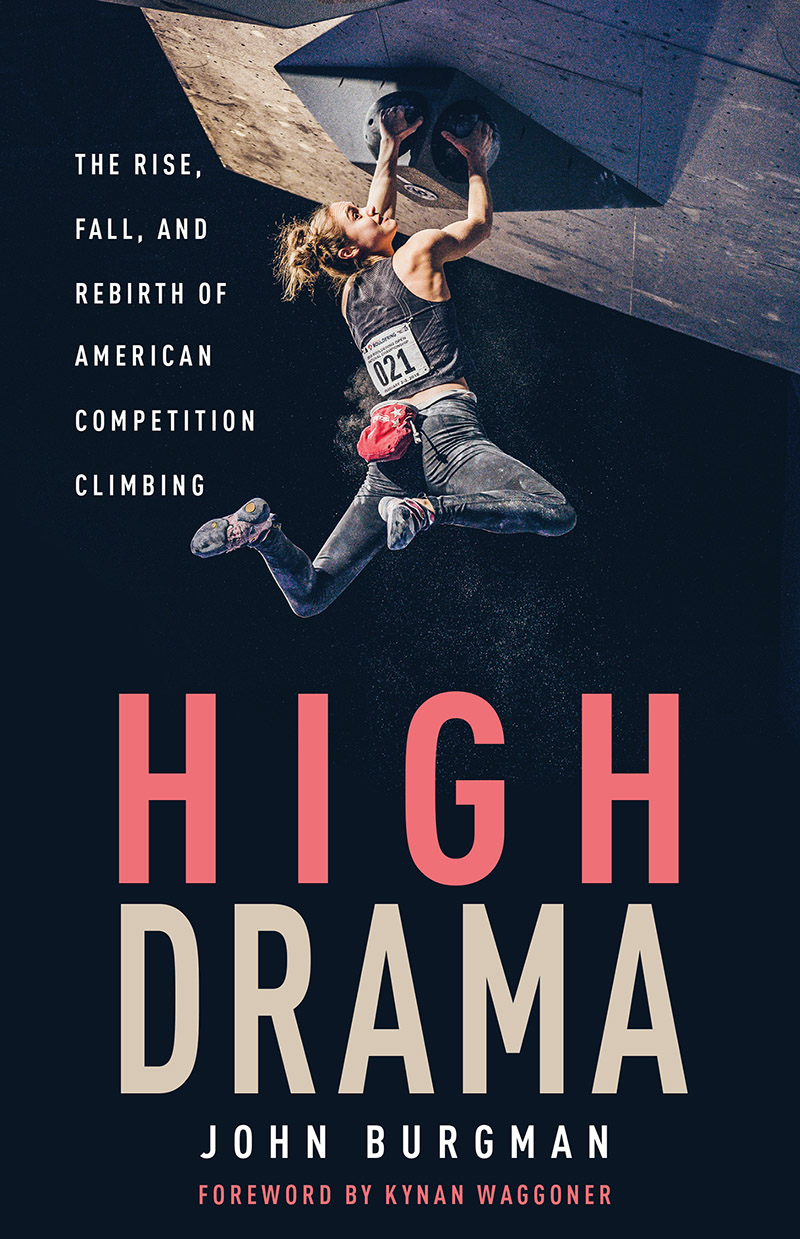
This book is dedicated to those whose names, efforts, and dreams reside in its pages.
* * *
From this hour I ordain myself loosd of limits and imaginary lines, Going where I list, my own master total and absolute
Walt Whitman, Song of the Open Road
Contents
Foreword by Kynan Waggoner
What is competition climbing today? Where has it been and where is it going? Having been involved with climbing gyms and competitions from the mid-1990s and in places nowhere near real rocks (Florida!), the past couple of decades have shown us how quickly a sport can evolve.
It still seems a little unbelievable, but it is true: the sport of climbing is going to the Olympics!
Will it bring fame and wealth to some incredibly gifted climbing athletes? Absolutely.
Will it spur an incredible amount of growth in the number of people participating in climbing? Absolutely.
Does Olympic inclusion run the risk of further distancing the sport of competition climbing from the sport, or spirit, of rock climbing? Absolutely.
Over the course of my career with USA Climbing, I held out hope that someone would gather the stories about the people (and events) that have given their heart and soul to this sport and shaped the way modern competition climbing looks and functions. As I have seen how quickly things can change and grow, from early competitions in the first-generation climbing gyms to the skyrocketing participation of youth climbers, and now to high-production televised National and World Cup events, this hope was somewhat driven by feara fear that history would fade away with our memories and that there would be no chronicle for future generations to read. Kudos to John Burgman for stepping up to ensure that the stories live on: the stories that tell us not only where we are but where we came from.
Like many others, we stand on the shoulders of our predecessors. The list of impactful names is far too long to try to compile here. This history can give us the opportunity to understand where we are now, offer thanks to all of those who stepped up to try to strive for better with our sport, and inspire current and future generations to further shape climbing. We need to recognize the incredibly positive impact that all the folks inside of these pages have made on competition climbing, and that the sport we all enjoy today is a result of a lot of hard work, likely for very little monetary gain. Our cumulative impact is reflected today in both domestic and international climbing competitions, and of this I am extremely proud.
As we look forward to the 2020 Olympics in Tokyo and the 2024 Olympics in Paris, please note the responsibility that we share with every athlete, event organizer, and routesetter: that of staying true to the counterculture roots of the sport of rock climbing while staying open to the possibilities inherent in competition climbing.
History is a relentless master. It has no present, only the past rushing into the future. To try to hold fast is to be swept aside.John F. Kennedy
Enjoy the read!
Kynan Waggoner, November 2019
Preface
One of the most exciting moments in the history of American competition climbing took place on February 3, 2018. The Bouldering National Championship, played out over multiple days and multiple rounds at the Salt Palace Convention Center in Salt Lake City, Utah, had culminated in a final boulder. The result of the mens division had already been confirmed, with Nathaniel Coleman besting all other competitors in a star-making performance in his home state. It was a historic moment in its own right, but more thrilling was the result of the womens division, which remained far more open-ended. In fact, four of the United States greatest competitorsBrooke Raboutou, Claire Buhrfeind, Ashima Shiraishi, and Alex Pucciowere in contention to become the womens national champion. Their respective attempts to climb the last boulder would determine the outcome.
However, there was more than just a revered championship on the line. An announcement that climbing was to be included in the 2020 Olympics had recently provided the whole sport with a jolt of energy, and this championships exhilarating conclusion would give direct insight about the United States Olympic prospects; indeed, whichever woman won this Bouldering National Championship would be considered one of the early American favorites for a possible invitation to the impending Olympic Games.
On top of that newfound Olympic sheen, indoor climbing was in the midst of a popularity boom in the United States. There were more than 400 climbing gyms around the country, and that number was increasing each year. In congested urban areas, old factories and abandoned warehouses were being purchased by developers and repurposed as climbing gyms. Brooklyn Boulders, First Ascent, Earth Treks, Planet Granite, Momentum Climbing, Mesa Rim, Hangar 18, Hoosier Heights, and other gyms seemed to be constantly expanding with new facilities. With them, new life was being breathed into forsaken real estate, and the sport of climbing was being offered more and more in the American recreational milieu. Students at colleges could now take climbing classes, and children as young as three years old could enroll in climbing gyms youth clubs. Some American climbers had become veritable celebrities, with lucrative sponsorship arrangements and financial support from companies ranging from Patagonia and The North Face to Polo and Coca-Cola.
Underlying all these extraneous elements at the Salt Palace Convention Center that afternoon was a palpable competitive tension. The event was offering spectatorsboth inside the facility and watching a livestream onlineathletic theater that had long characterized other sports like baseball, football, basketball, and tennis. Specifically, the womens bouldering division was herein presenting a nail-biting finish and proving competition climbing to be exciting, engaging, and unpredictable.
And with that, the first few women competitorsMargo Hayes, Meagan Martin, and Brooke Raboutoumade their respective attempts at climbing the final boulder. It was not an easy task. The boulders climbing route began beneath a long roof section. Successfully reaching the top for any competitor would entail first crouching below the roof, then moving horizontally over its crowd-facing ledge, and returning to a vertical position to reach the last handhold. Every sequence would require a mix of strength and coordination, as well as a compartmentalization of the fatigue that was reaching its weekend peak.
Hayes, Martin, and Raboutou were undoubtedly three of the best climbers in the entire world; Hayes had successfully climbed famed outdoor routes in countries around the world, such as La Rambla and Biographie in Spain and France, respectively. The ascents, each among the most challenging of all the established climbs, had justifiably made Hayes a climbing icon of her generation. Martin, iconic in her own right, had coupled her decorated competitive climbing career with much-admired appearances on the sports-entertainment television program American Ninja Warrior . And Raboutou, whose parents are legendary competitors Didier and Robyn Erbesfield - Raboutou , had become the youngest person ever to climb a route at a difficulty grade of 5.14b when she climbed Spains Welcome to Tijuana at age 11.
Yet, as Hayes, Martin, and Raboutou attempted to ascend the boulder at the national championship, they each became bested by the climbing routes steep roof section. When it was clear that none of them would be able to successfully climb to the top of the boulder in the allotted time, the crowd began to murmur. The tension continued to mount as the championships result was undetermined.








